Remember Muhammad Ali's great fight against George Foreman? The odds were overwhelmingly against Ali. Huge-armed Foreman was young, strong to uproot trees, or run up the side of a mountain for idle amusement. He hit Joe Frazier so hard in the stomach, the blows literally lifted Joltin' Joe into the air. Ali had missed competition for three years because of his anti-war politics. He looked soft, out of shape, old. The experts warned him, run for your life, dance, stay off the ropes -- but Ali ignored the critics. He ran to the ropes, leaned back and gestured, come on, Big George, let's see what you got.
He took every punch the giant had to offer, and in the 8th round, it was Foreman who went down, and Muhammad Ali was king of the world.
The California stem cell program reminds me of that fight.
The odds are very much against us winning our way to a cure before our funding runs out in a couple of years.
But we're going to do it anyway.
We're going to whip diabetes.
By "we", of course, I mean the California stem cell program, and the seven million voters who said yes to the greatest battle of all time: the fight against chronic disease.
You've heard the statistics: 100 million Americans have a disease they will never get rid of -- chronic means long-term, generally incurable.
And the cost: the incredible financial burden, a mountain of medical debt for the country, roughly two trillion dollars, equaling or exceeding the national debt. If we can't heal people, we must pay for their care, and the costs are ruining us.
But the California Institute for Regenerative Medicine (CIRM) is taking on the challenge.
Step by step, the CIRM has advanced giving grants to students as well as veteran scientists; supporting research leading to 1,200 scientific papers on medical discoveries; constructing twelve new stem cell research buildings bringing in an additional $900 million in new money from donors, for these centers of cooperation where scientists work together.
Today, 25 teams of California's best scientists are taking on different forms of chronic disease or injury. Each project is aimed to reach human trials within four years.
We have begun magnificently. But that's not enough. People do not live on hope and great beginnings.
But we need a win, an Ali versus Foreman victory, and we need it now.
One of those disease teams, built around a small California company, ViaCyte, Inc., may be just about to jolt the giant.
With major grants and loans from CIRM, and additional assistance from JDRF, the world's leading diabetes funding foundation, ViaCyte is challenging Type 1 diabetes.
Diabetes has already had one research miracle. Remember the recombinant DNA struggle? In 1977, there was a tremendous debate between scientists who wanted the research to go forward carefully, and the religious right, skeptics, and conservative politicians who wanted it stopped.
Fortunately for the health of humanity, recombinant DNA research was allowed. The very next year, 1978, artificial human insulin was developed by a California research company, Genentech -- a product now keeping millions alive around the world.
But there is no cure.
Type 1 diabetes remains a genuinely horrific condition. It can blind you, require the amputation of limbs, incite a heart attack, or throw you into a coma -- and the only way to keep safe is to monitor every bite of food, and test your blood often.
Imagine trying to explain to your little child that their immune system has destroyed part of their body, and they must have shots every day, and their fingers pricked with sharp objects, over and over, no matter how they cry, because they'll die if they don't.
I remember the pain in the voice of Dr. Francisco Prieto on the board of directors for CIRM -- talking about his first amputation, when he had to saw off a patient's foot, because of diabetes.
I remember my Uncle Ben, who died of the condition. His kidneys failed, and he had to have his blood washed by dialysis, day after day.
Instead, imagine a device the size of a credit card, to be implanted under the skin, and then -- forgotten. Called "an encapsulation medical device", Encaptra, it contains cells designed to replace the islet cells which type 1 diabetes takes away.
Embryonic stem cells are differentiated into cells that ultimately make hormones, including insulin. These "progenitor" cells are inserted into the Encaptra drug delivery device, and mature in the body into the islet cells that produce insulin.
The "credit card" is amazing, scientifically. It is porous, with holes so small the body's attack cells can't get through to kill the good cells, but the oxygen and life support nutrients can come in, and the insulin can get out.
They have tried miniature versions on diabetic mice, and they were cured, again and again and again.
If it works on people, the world changes.
If we can cure just one "incurable" disease, the floodgates to research funding will open and economy-crushing medical costs will be reduced.
I spoke with Bob Klein, recently retired Chairman of the Board of Directors for CIRM, and father of a diabetic son, Jordan. Bob has been a massive fundraiser for diabetes for many years, leading JDRF as it funded more than a billion dollars of research. He has seen pretty much everything when it comes to diabetes.
What did he think about the ViaCyte project?
"It is one of the most important and promising projects CIRM has ever funded," he said.
ViaCyte's Chief Scientific Officer, Kevin D'Amour, responded positively when I asked him if it was appropriate to use the word "cure" in regards to their project.
Like any good scientist, he was cautious, but said:
"Our product has the potential to provide patients with what amounts to a cure. The first human trials (in early 2014, if all goes well) will be conducted in patients with the disease; while demonstrating safety will be the primary endpoint, we will also be accessing efficacy, all in accordance with FDA requirements."
And then he added words every advocate would echo:
"We have already cured thousands of mice; it is time we started curing some people."
